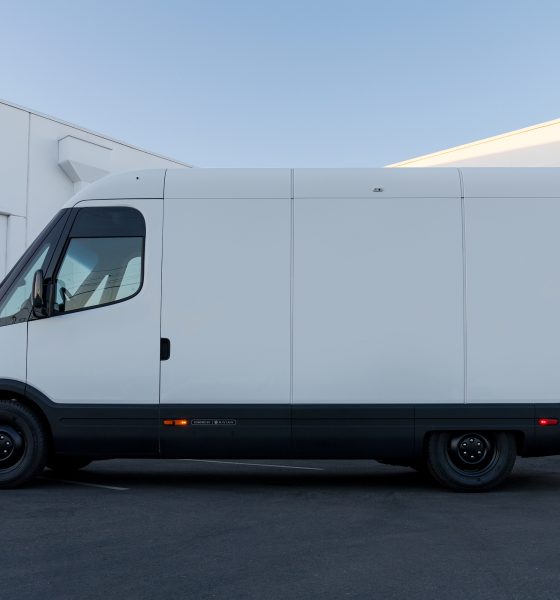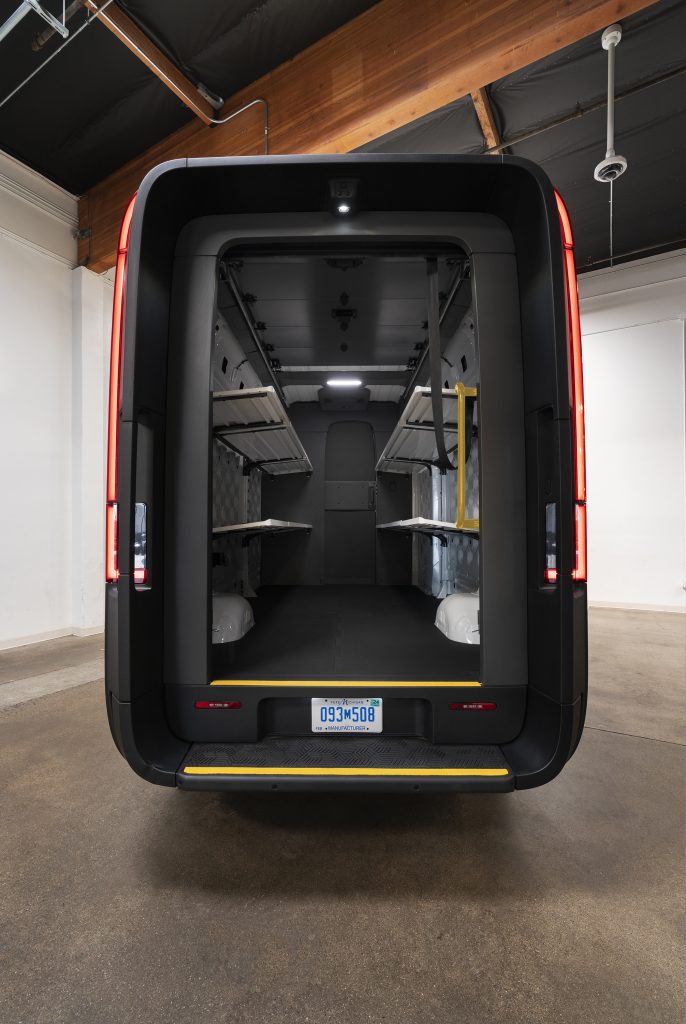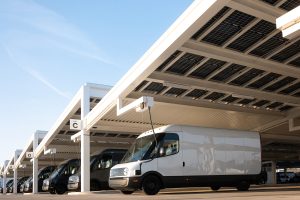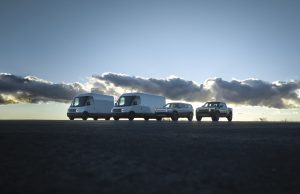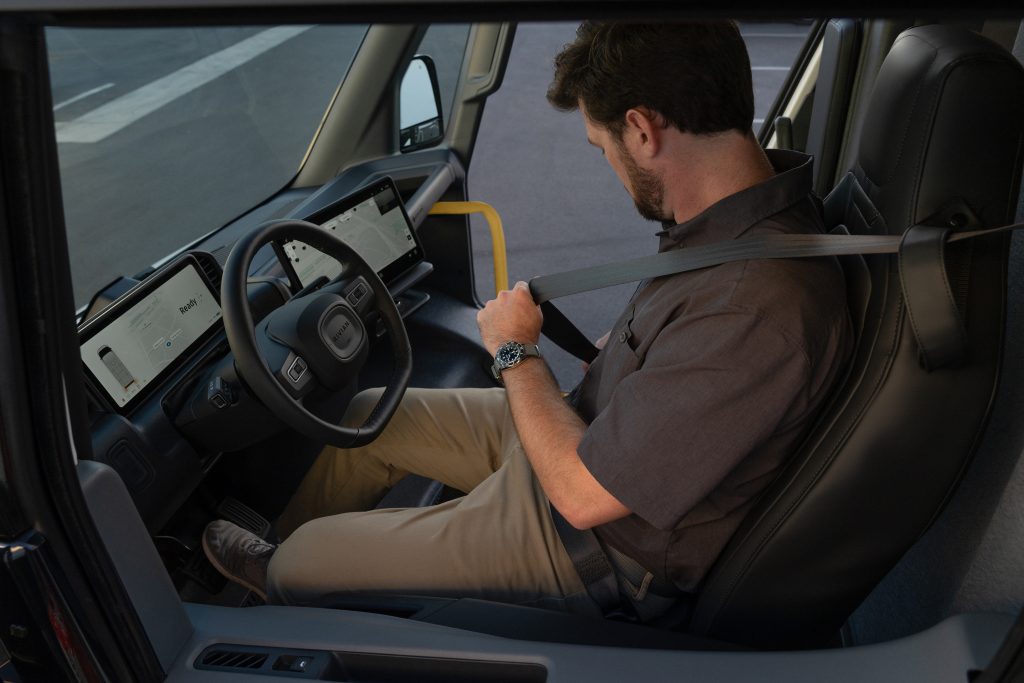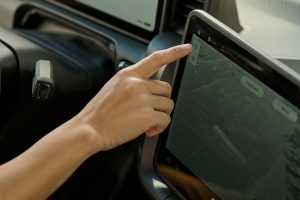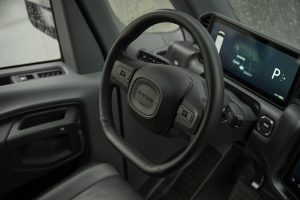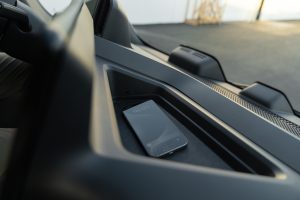Rivian is launching fleet sales of its once-exclusive van that was only available to Amazon.
On Monday, Rivian officially opened up its order books for any company aiming to purchase the van for a fleet. Currently, this is the only way to place an order for the Rivian Commercial Van (RCV), which differs in a few ways from Rivian’s EDV, which was an Amazon exclusive.
Tom Soloman, Senior Director of Business Development for Rivian, said:
“Through existing partnerships, our commercial vans have already proved incredibly successful. Amazon currently has more than 20,000 in its fleet and delivered over a billion packages from its Electric Delivery Vans in 2024 alone. Over the last year we have been focusing our efforts on testing with some larger fleets, and we’re really pleased with how those trials have gone. As a result, we’re excited to now be able to open sales to fleets of all sizes in the U.S., whether they want one van or thousands. Our vehicles are designed to not only be among the safest on the road but will also help fleet owners to reduce the cost of fleet ownership and their carbon footprint.”
Rivian RCV Models
Rivian is launching two models of the RCV: the Delivery 500 and Delivery 700. The 500 is more compact than the 700 but offers one more mile of range than its larger sibling. Don’t be too impressed, though, because it only is able to travel 161 and 160 miles on a full charge, respectively.
These range ratings are powered by a 100 kWh Lithium Iron Phosphate (LFP) battery pack that is capable of charging speeds of up to 100 kW.
Fast charging is not necessarily needed with these vehicles because, in a fleet setting, they’ll likely be sitting for some period of time hooked up to chargers, giving a full battery to whoever uses them at the beginning of a trip.
Rivian RCV 500 Dimensions:
- Length – 248.5″
- Width – 96.4″ (including mirrors)
- Height – 114.7″
- 6.7″ of ground clearance
- 487 cu. ft. of cargo area
- 137.3″ of cargo length
- Up to 76.5″ of wall-to-wall cargo area
Rivian RCV 700 Dimensions:
- Length – 278″
- Width – 103.5″ (including mirrors)
- Height – 114.8″
- 6.9″ of ground clearance
- 652 cu. ft. of cargo area
- 166.8″ of cargo length
- Up to 83.6″ of wall-to-wall cargo area
Rivian RCV Safety Features
Rivian’s focus on safety was still a main point of emphasis with the RCV. It features all of your typical Driver Assistance and Safety Features that Rivian includes with other vehicles, with a few extras that fit the typical bill of a cargo van:
- Adaptive Cruise Control
- Blind Spot Warning
- Speed Limit Information Function
- Lane Keep Assist
- Lane Departure Warning
- High Beam Assist
- Back-Up Warning System
- Surround Park Assist
- Bird’s Eye Surround Camera
- Enhanced Reverse View
- Automatic Emergency Braking
- Forward Collision Warning
- Rear Cross Traffic Warning
- Dynamic Braking Support
It also features Rivian’s “Driver+” system, which includes a variety of radars, cameras, and sensors to improve safety:
- Five Radars – 1 Center Front Forward, 4 Corners
- Eight Cameras – 2 Center Front Windshield Forward, 2 Side Mirror Backward, 2 Rooftop, 1 Rear Surround View, 1 Interior
- 12 Ultrasonic Sensors
Rivian RCV Driver Features
In an effort to keep drivers focused on the road, comfortable throughout their workday, and safe, Rivian included a variety of features with the RCV.
- Easily Accessible Buttons – All controls are accessible from the steering wheel while driving
- Large, comfortable driver seat
- 15.4″ Center Display – One of the largest of any light-duty commercial vehicle
- Two Wireless Charging Pads
Rivian RCV Pricing
The Rivian RCV starts at $79,900, and fleet orders can be submitted to Rivian directly on their website.
Need accessories for your Tesla? Check out the Teslarati Marketplace:
- https://shop.teslarati.com/collections/tesla-cybertruck-accessories
- https://shop.teslarati.com/collections/tesla-model-y-accessories
- https://shop.teslarati.com/collections/tesla-model-3-accessories
Please email me with questions and comments at joey@teslarati.com. I’d love to chat! You can also reach me on Twitter @KlenderJoey, or if you have news tips, you can email us at tips@teslarati.com

Elon Musk
Elon Musk and Tesla AI Director share insights after empty driver seat Robotaxi rides
The executives’ unoccupied tests hint at the rapid progress of Tesla’s unsupervised Robotaxi efforts.

Tesla CEO Elon Musk and AI Director Ashok Elluswamy celebrated Christmas Eve by sharing personal experiences with Robotaxi vehicles that had no safety monitor or occupant in the driver’s seat. Musk described the system’s “perfect driving” around Austin, while Elluswamy posted video from the back seat, calling it “an amazing experience.”
The executives’ unoccupied tests hint at the rapid progress of Tesla’s unsupervised Robotaxi efforts.
Elon and Ashok’s firsthand Robotaxi insights
Prior to Musk and the Tesla AI Director’s posts, sightings of unmanned Teslas navigating public roads were widely shared on social media. One such vehicle was spotted in Austin, Texas, which Elon Musk acknowleged by stating that “Testing is underway with no occupants in the car.”
Based on his Christmas Eve post, Musk seemed to have tested an unmanned Tesla himself. “A Tesla with no safety monitor in the car and me sitting in the passenger seat took me all around Austin on Sunday with perfect driving,” Musk wrote in his post.
Elluswamy responded with a 2-minute video showing himself in the rear of an unmanned Tesla. The video featured the vehicle’s empty front seats, as well as its smooth handling through real-world traffic. He captioned his video with the words, “It’s an amazing experience!”
Towards Unsupervised operations
During an xAI Hackathon earlier this month, Elon Musk mentioned that Tesla owed be removing Safety Monitors from its Robotaxis in Austin in just three weeks. “Unsupervised is pretty much solved at this point. So there will be Tesla Robotaxis operating in Austin with no one in them. Not even anyone in the passenger seat in about three weeks,” he said. Musk echoed similar estimates at the 2025 Annual Shareholder Meeting and the Q3 2025 earnings call.
Considering the insights that were posted Musk and Elluswamy, it does appear that Tesla is working hard towards operating its Robotaxis with no safety monitors. This is quite impressive considering that the service was launched just earlier this year.
Elon Musk
Starlink passes 9 million active customers just weeks after hitting 8 million
The milestone highlights the accelerating growth of Starlink, which has now been adding over 20,000 new users per day.

SpaceX’s Starlink satellite internet service has continued its rapid global expansion, surpassing 9 million active customers just weeks after crossing the 8 million mark.
The milestone highlights the accelerating growth of Starlink, which has now been adding over 20,000 new users per day.
9 million customers
In a post on X, SpaceX stated that Starlink now serves over 9 million active users across 155 countries, territories, and markets. The company reached 8 million customers in early November, meaning it added roughly 1 million subscribers in under seven weeks, or about 21,275 new users on average per day.
“Starlink is connecting more than 9M active customers with high-speed internet across 155 countries, territories, and many other markets,” Starlink wrote in a post on its official X account. SpaceX President Gwynne Shotwell also celebrated the milestone on X. “A huge thank you to all of our customers and congrats to the Starlink team for such an incredible product,” she wrote.
That growth rate reflects both rising demand for broadband in underserved regions and Starlink’s expanding satellite constellation, which now includes more than 9,000 low-Earth-orbit satellites designed to deliver high-speed, low-latency internet worldwide.
Starlink’s momentum
Starlink’s momentum has been building up. SpaceX reported 4.6 million Starlink customers in December 2024, followed by 7 million by August 2025, and 8 million customers in November. Independent data also suggests Starlink usage is rising sharply, with Cloudflare reporting that global web traffic from Starlink users more than doubled in 2025, as noted in an Insider report.
Starlink’s momentum is increasingly tied to SpaceX’s broader financial outlook. Elon Musk has said the satellite network is “by far” the company’s largest revenue driver, and reports suggest SpaceX may be positioning itself for an initial public offering as soon as next year, with valuations estimated as high as $1.5 trillion. Musk has also suggested in the past that Starlink could have its own IPO in the future.
News
NVIDIA Director of Robotics: Tesla FSD v14 is the first AI to pass the “Physical Turing Test”
After testing FSD v14, Fan stated that his experience with FSD felt magical at first, but it soon started to feel like a routine.

NVIDIA Director of Robotics Jim Fan has praised Tesla’s Full Self-Driving (Supervised) v14 as the first AI to pass what he described as a “Physical Turing Test.”
After testing FSD v14, Fan stated that his experience with FSD felt magical at first, but it soon started to feel like a routine. And just like smartphones today, removing it now would “actively hurt.”
Jim Fan’s hands-on FSD v14 impressions
Fan, a leading researcher in embodied AI who is currently solving Physical AI at NVIDIA and spearheading the company’s Project GR00T initiative, noted that he actually was late to the Tesla game. He was, however, one of the first to try out FSD v14.
“I was very late to own a Tesla but among the earliest to try out FSD v14. It’s perhaps the first time I experience an AI that passes the Physical Turing Test: after a long day at work, you press a button, lay back, and couldn’t tell if a neural net or a human drove you home,” Fan wrote in a post on X.
Fan added: “Despite knowing exactly how robot learning works, I still find it magical watching the steering wheel turn by itself. First it feels surreal, next it becomes routine. Then, like the smartphone, taking it away actively hurts. This is how humanity gets rewired and glued to god-like technologies.”
The Physical Turing Test
The original Turing Test was conceived by Alan Turing in 1950, and it was aimed at determining if a machine could exhibit behavior that is equivalent to or indistinguishable from a human. By focusing on text-based conversations, the original Turing Test set a high bar for natural language processing and machine learning.
This test has been passed by today’s large language models. However, the capability to converse in a humanlike manner is a completely different challenge from performing real-world problem-solving or physical interactions. Thus, Fan introduced the Physical Turing Test, which challenges AI systems to demonstrate intelligence through physical actions.
Based on Fan’s comments, Tesla has demonstrated these intelligent physical actions with FSD v14. Elon Musk agreed with the NVIDIA executive, stating in a post on X that with FSD v14, “you can sense the sentience maturing.” Musk also praised Tesla AI, calling it the best “real-world AI” today.

